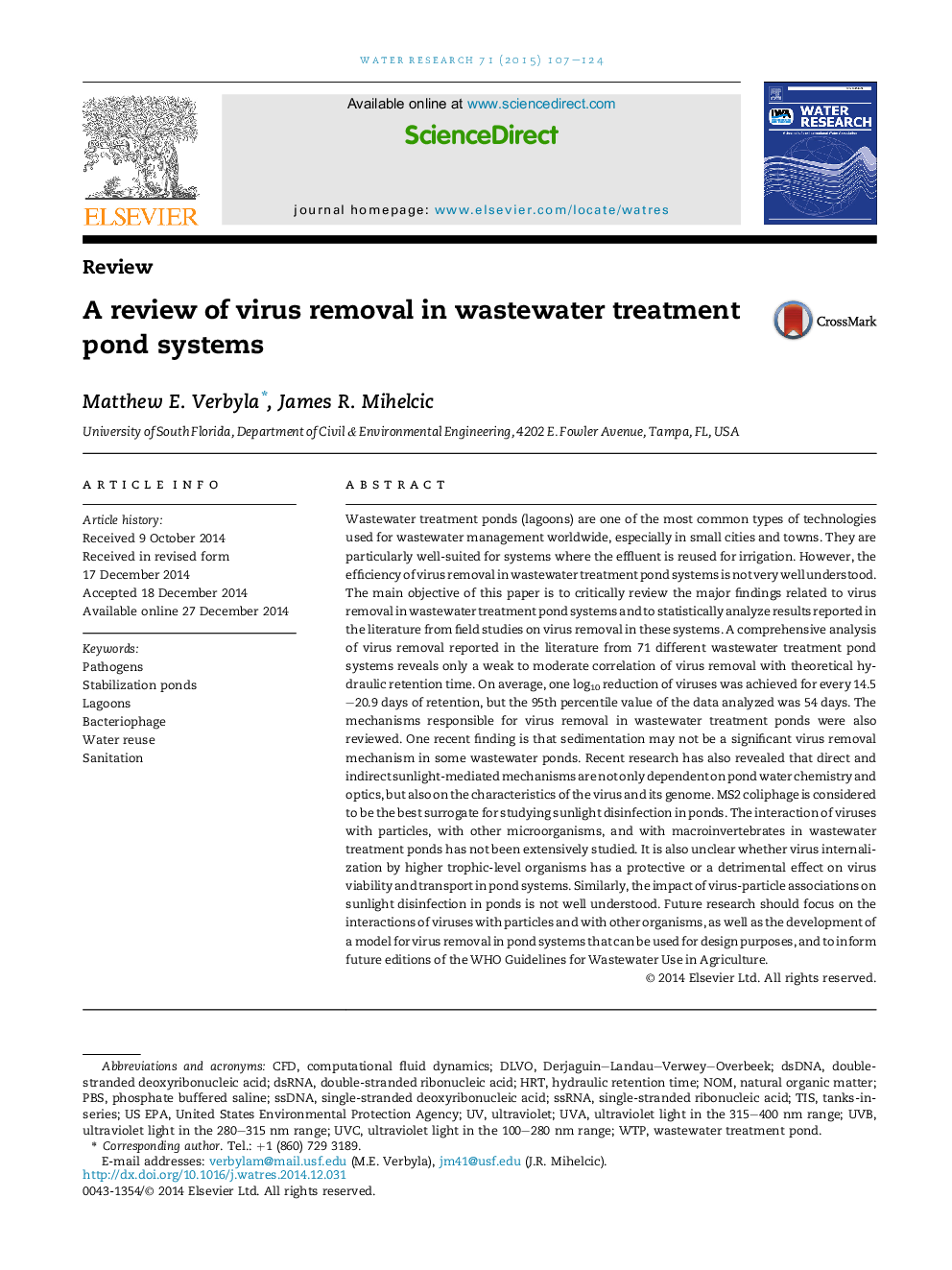| کد مقاله | کد نشریه | سال انتشار | مقاله انگلیسی | نسخه تمام متن |
|---|---|---|---|---|
| 4481162 | 1623097 | 2015 | 18 صفحه PDF | دانلود رایگان |
• Previously published virus removal data from 71 different systems were analyzed.
• Weak to moderate correlation between virus removal and hydraulic retention time.
• 14.5 days of retention for each log10 reduction of viruses (geometric mean).
• 54 days of retention for each log10 reduction of viruses (95th percentile).
Wastewater treatment ponds (lagoons) are one of the most common types of technologies used for wastewater management worldwide, especially in small cities and towns. They are particularly well-suited for systems where the effluent is reused for irrigation. However, the efficiency of virus removal in wastewater treatment pond systems is not very well understood. The main objective of this paper is to critically review the major findings related to virus removal in wastewater treatment pond systems and to statistically analyze results reported in the literature from field studies on virus removal in these systems. A comprehensive analysis of virus removal reported in the literature from 71 different wastewater treatment pond systems reveals only a weak to moderate correlation of virus removal with theoretical hydraulic retention time. On average, one log10 reduction of viruses was achieved for every 14.5–20.9 days of retention, but the 95th percentile value of the data analyzed was 54 days. The mechanisms responsible for virus removal in wastewater treatment ponds were also reviewed. One recent finding is that sedimentation may not be a significant virus removal mechanism in some wastewater ponds. Recent research has also revealed that direct and indirect sunlight-mediated mechanisms are not only dependent on pond water chemistry and optics, but also on the characteristics of the virus and its genome. MS2 coliphage is considered to be the best surrogate for studying sunlight disinfection in ponds. The interaction of viruses with particles, with other microorganisms, and with macroinvertebrates in wastewater treatment ponds has not been extensively studied. It is also unclear whether virus internalization by higher trophic-level organisms has a protective or a detrimental effect on virus viability and transport in pond systems. Similarly, the impact of virus-particle associations on sunlight disinfection in ponds is not well understood. Future research should focus on the interactions of viruses with particles and with other organisms, as well as the development of a model for virus removal in pond systems that can be used for design purposes, and to inform future editions of the WHO Guidelines for Wastewater Use in Agriculture.
Figure optionsDownload high-quality image (297 K)Download as PowerPoint slide
Journal: Water Research - Volume 71, 15 March 2015, Pages 107–124
